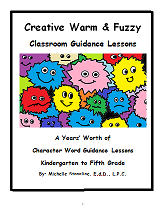Child Behavior Tips
Helping Kids Behave Part Four
A father had spent an entire weekend with his son and had an important meeting when they came back. As he was leaving for the meeting the son asked if he had a minute. He was really asking do you really care about me.
Rather than becoming angry, the father told him he had to go to the meeting then but asked if they could get together when he came back and most important set a time for them to get together. It is vitally important that students know you care about them. Try learning to speak all five languages and then use them with your class, children, and or spouse for a week and compare your results.
This also relates to where power is located in the home, school and the classroom. Johnson & Johnson (1994) describe five bases of power, reward, coercive, legitimate, referent, expert, and informational. Of the six bases the weakest are legitimate and coercive.
Therefore if your only source of power to run your classroom or home is because you are the boss and can punish them, you are in a relatively weak position. Not only that, but research on group interaction shows that while individuals will do what a coercive leader wants they will avoid interacting with that leader in the future.
Group effectiveness improves when the leader’s power is based on competence, expertise, and information. You need to build a power base anchored in the students’/child’s perception of you as someone who can give valued rewards, who has information they NEED and do not have, and most importantly, as someone they admire and want to emulate. Caring helps build all three of these bases.
People usually want to be like people who care about them. Speaking a child’s love language is a reward.
And they come to know that you have knowledge that can help them control their behavior. As such you are empowering them. These are very powerful tools.
Gordon (1993) notes that leaders can increase their own power by sharing power with others. Some of the methods she recommends are very familiar to good teachers.
Give them empowering information. Provide emotional support. Offer words of encouragement. Serve as a role model. And facilitating mastery of a task.
These are strikingly similar to Chapman’s acts of service, affirming words, quality time, and gifts. In the course of all that one might also pat the individual on the back, touch.
This does not mean one should let kids get away with a lot. As Davis, Nelson & Gauger, point out part of love is setting limits. Children feel safe when they know an adult is in control.
Kids also need to learn that their actions have consequences. Most law enforcement officers will not be psychologists, or counselors, or sociologists. GEMA (2000) points out that discipline must be firm (certain), fair, and consistent. That is
ALL teachers/parents must have the SAME CONSEQUENCES for the same behavior. Many children who already have problems do not have the resources to understand and accept that the standards in Mr. Jones’ room are radically different from Ms. Smith.
It is recommend that departments and grades meet
regularly, say once a week at first, to determine common discipline guidelines
and that teachers meet across grades to discuss discipline at different grade
levels. Chapman (2000) recommends that rules meet three criteria. They be few, fair and clear.
Creative Counseling 101 Home Page
Disclaimer: This website and its content is intended for trained licensed mental health professionals and school certified mental health professionals to use for their clients / students at their own discretion.
*If you ignore the disclaimer above are using these techniques on yourself and you feel any discomfort or upset it is highly suggested that you seek out a licensed mental health professional immediately.
"Beyond Art Therapy" is the concept from Dr. Stangline that combines all creative fields in therapy. It is not the traditional "art therapy" but goes beyond to include sand tray therapy, play therapy, mindfulness, meditation, color therapy, cognitive behavioral therapy, and a vast majority of other therapies.
For any other type of mental health emergency call your local 911 / Police Number immediately.
Dr. Stangline does not offer advice / suggestions to anyone who is not a professional mental health provider, or a student who is studying this field and has questions about mental health programs of study.
See our Exciting Selection of eBooks:
Award Winning:
Creative Counseling 101 eBook
Our Best Seller!
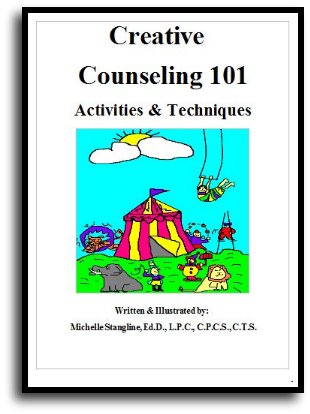
Step By Step Therapy:
Learn how to be a more Creative Therapist with the Book that started it all!
- Graduate School Counseling book used by hundreds of graduate counseling students!
- Includes full color reproducible worksheets with most activities.
- Winner of the Counselor Writer of the Year Award, 2011, Georgia Regional Award
Download Your Copy Today Only $39.95:
See Creative Counseling 101 eBook Information Here:
Get the Set
of all four
eBooks for only $98.95:
An incredible collection of how to do therapy eBooks!
A $159.80 Value,
You Save Over $60!
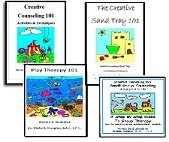
Get your complete set of the Creative Counseling 101.com eBooks by Dr. Michelle Stangline for only $98.95, that's less than $25.00 per eBook (Regular Price is $39.95 for each eBook.).
Your complete set includes:
- Creative Counseling 101
- Creative Group Counseling 101
- Creative Play Therapy 101
- Creative Sand Tray 101
For more information click the link below:
See Complete Set of eBooks For Sale Here:
New!!! "Beyond Art Therapy" 101 eBook
Over 300 pages of Beyond Art Therapy activities and techniques. Learn what I teach graduate counseling students!
See the link below for more information.
Only $39.95
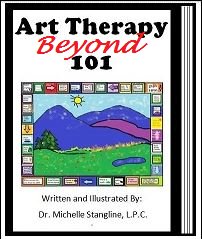
See More Invividual eBooks For Sale:
Sand Tray Therapy 101 eBook:
Learn how to do Sand Tray Therapy or enhance your skills.
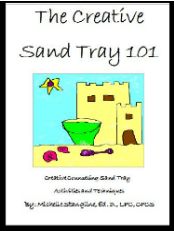
Play Therapy 101 eBook
Learn how to do play therapy or enhance your skills.
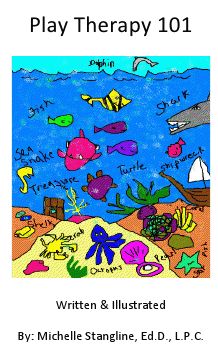
Small Group Counseling eBook For Sale:
Learn how to do creative group therapy and enhance your skills.
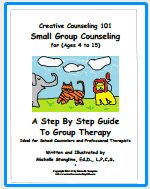
School Counselor Guidance Lesson & Social Stories eBook for sale:
Get a year's worth of school counselor guidance lessons with "Creative Warm & Fuzzy Classroom Guidance Lessons eBook". Introduce your students to the "Warm & Fuzzy Way". Click the link below for more information:
Warm & Fuzzy School Counselor Guidance Lessons eBook
